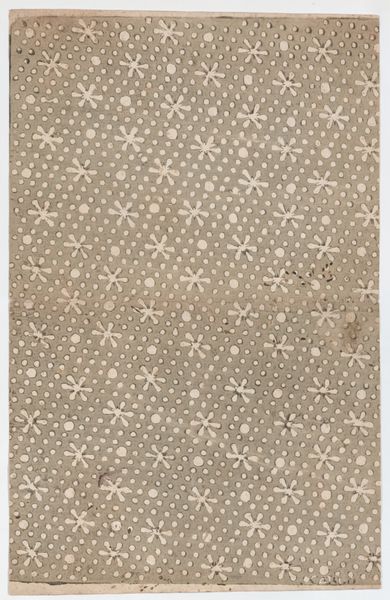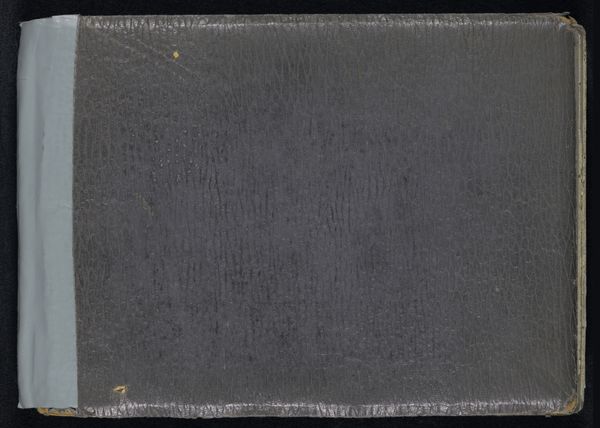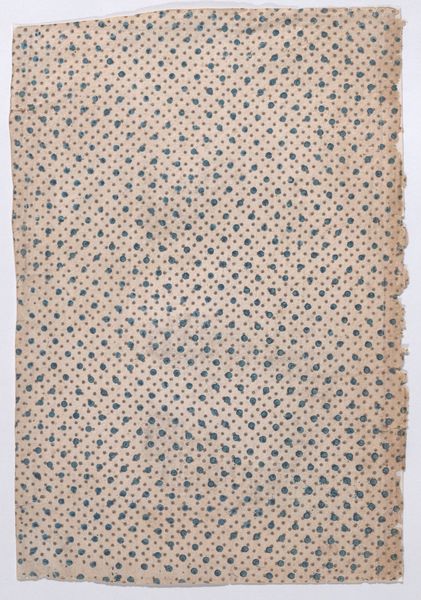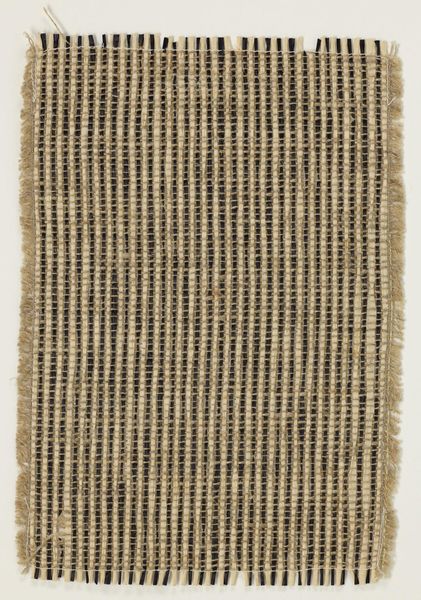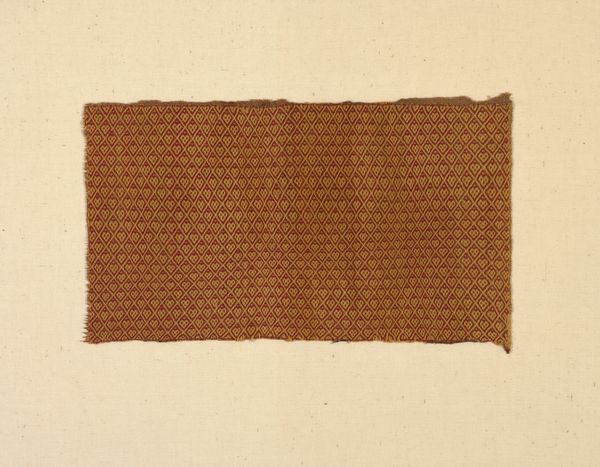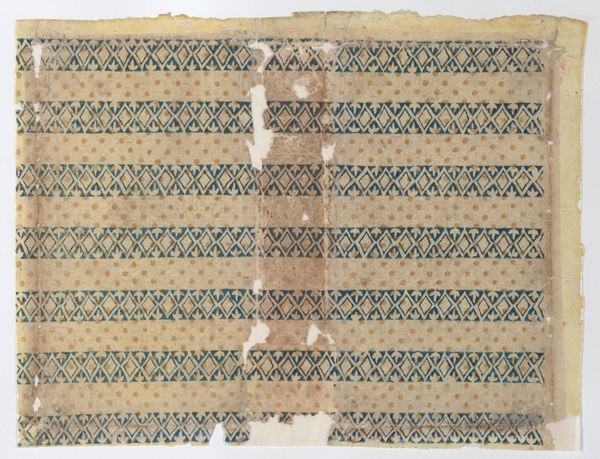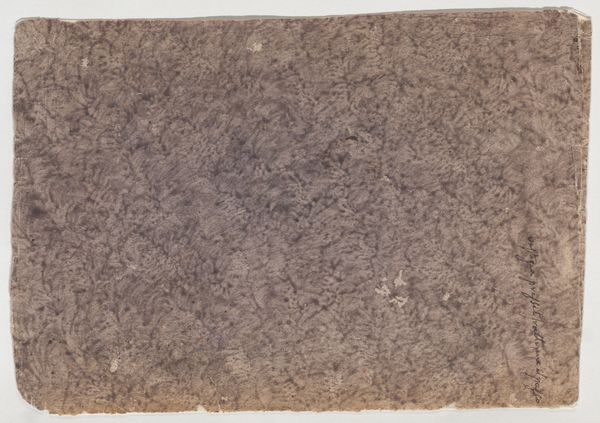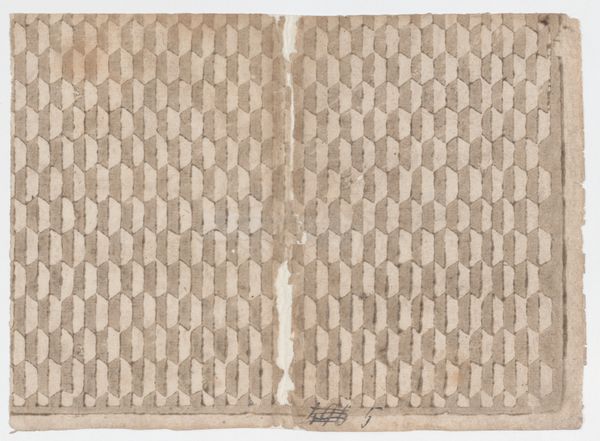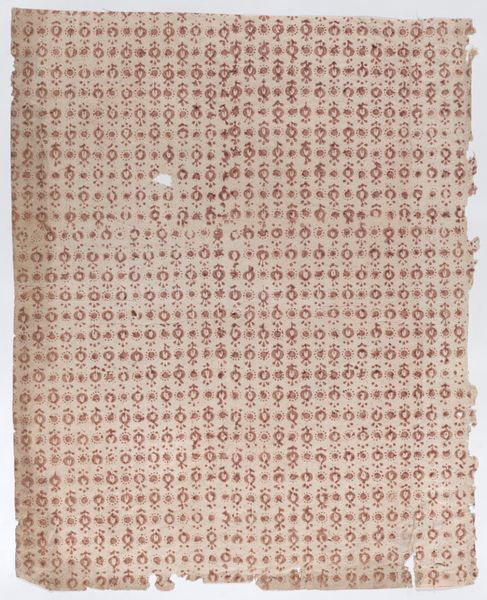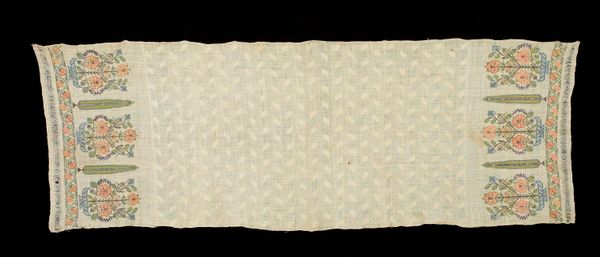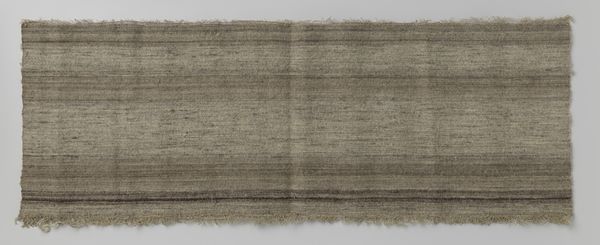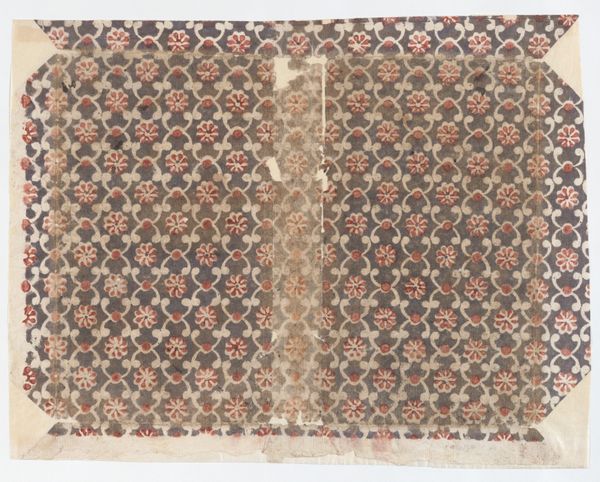
Sheet with overall pattern of flowers within squares 1800 - 1900
0:00
0:00
drawing, print, textile, paper
#
drawing
#
organic
# print
#
textile
#
paper
#
grainy texture
#
organic pattern
#
geometric
#
textile design
#
decorative-art
Dimensions: Sheet: 14 1/2 × 17 3/8 in. (36.8 × 44.1 cm)
Copyright: Public Domain
Curator: Before us is an intriguing work—a sheet featuring an overall pattern of flowers enclosed within squares. Created sometime between 1800 and 1900 by an anonymous artist, it resides in the Metropolitan Museum. The piece employs drawing and printing techniques on paper, seemingly intended as a textile design. Editor: The condition of the paper speaks volumes. It looks almost like aged linen; the repeated pattern feels both grounding and restrictive, like a grid imposed on natural growth. Curator: Yes, the tension between the organic and the geometric is fascinating. The floral motif, contained within those rigid squares, evokes a sense of controlled nature, perhaps reflective of societal ideals regarding order and beauty. This tension is the very nature of textile design. Editor: Indeed, and considering this was likely intended as a textile pattern, the labour involved is crucial to note. Imagine the repeated process of carving the block, applying the ink, pressing it onto fabric...it implies a system of labor often overlooked in favor of mere aesthetics. Curator: Furthermore, flower designs carry such emotional and cultural weight across centuries. They are frequently seen in memorial and mourning traditions. Editor: That’s interesting; what makes you connect that imagery here? Is it simply that aged effect in the paper, with its almost grey wash? Curator: It isn't solely the colour; the enclosed nature of the flowers feels elegiac. And designs like this often have symbolic resonance within specific communities, which we unfortunately cannot ascertain with an anonymous work like this. The very nature of such domestic-oriented arts invites us to speculate the space they would inhabit: its inhabitants, daily life, rituals of gathering, adornment, memorial, gift, etc. Editor: I am stuck on how the pattern creates a kind of optical compression; that small repeated design, its deployment across the fibers of another material in repeated fashion to construct larger items such as dresses or curtains—this changes its impact totally. The texture is everything in its eventual life! Curator: Precisely! We've considered the design itself and the potential hands involved in its creation and use—fascinating avenues into this intricate textile pattern. Editor: And thinking about those eventual textiles and social histories embedded within it: the unseen and repeated craft labour of people we don't often consider when viewing items like this on display.
Comments
No comments
Be the first to comment and join the conversation on the ultimate creative platform.
